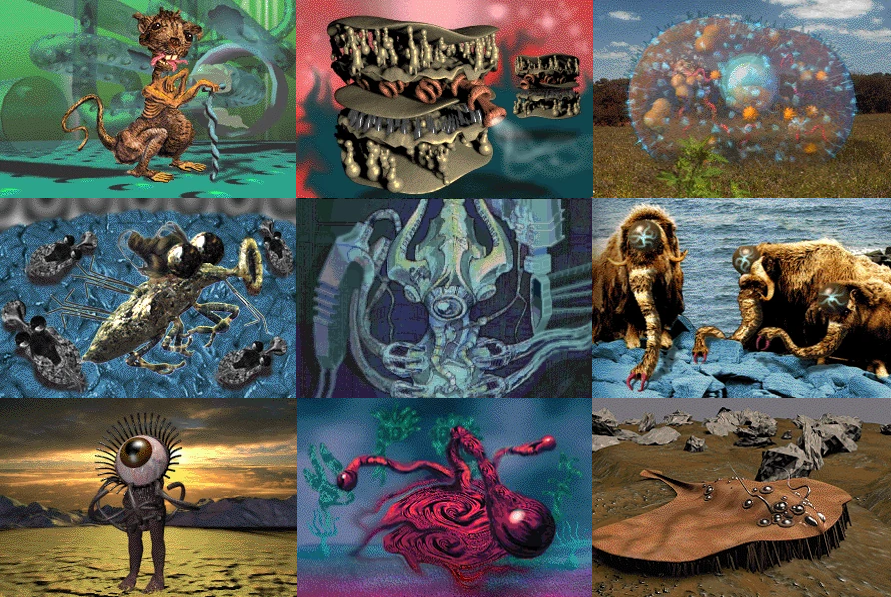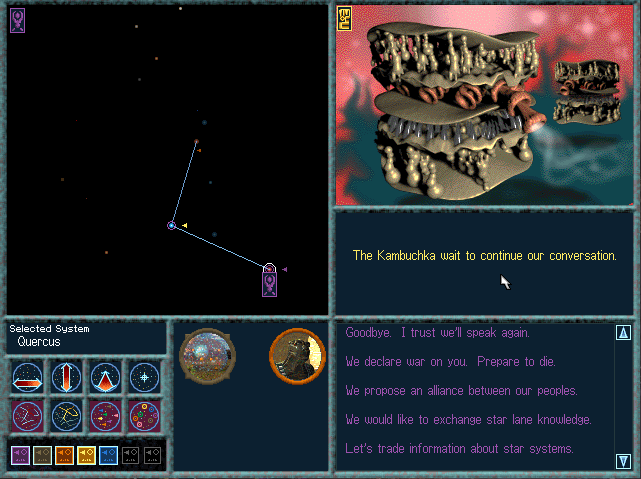I wrote previously that game mechanics are not the most important thing for me in strategy games. It’s great when they are challenging and fun to experiment with, but they won’t matter without a good narrative, story, drama, creativity—all these more or less role-playing concepts that I have loved experiencing while playing since childhood. Ascendancy is an extreme example of a 4X strategy game that pretty much fails mechanically but excels creatively.
Ascendancy is not a turn-based strategy game but a real-time one with an active pause. The genre’s usual production-science-food triangle helps build, research, and grow faster. You colonize planets, build ships, meet other races, wage colonization wars, and eventually stop playing. Nothing is pretty much out of the ordinary at first glance. But in contrast to most of the 4X strategies, it’s far easier to stop playing Ascendancy by actually winning.

The secret of flawless victories lies in the utter stupidity of your foes. This is probably the weakest AI I’ve ever met in commercial strategy games. No matter the enemy’s level of animosity and aggressiveness, you’ll have to struggle to lose. While spamming lots of weak ships—because, of course, it sucks at research—AI forgets entirely about planetary defenses and leaves backdoors to its colonies wide open.
Combined with going all in with a usual blight of 4X strategies—hellishly boring micro-management in the middle game—Ascendancy fails to engage on a purely mechanic layer. The pure gameplay is boring and tedious, and it aged pretty fast—Ascendancy was released a mere year before Master of Orion II. This is why it’s even more unfair that the things this game has done right, unfortunately, didn’t receive more widespread attention.
The things Ascendancy excels at can be grouped under one impressive umbrella—creativity. The game presents one of the most original universes I’ve ever seen in space 4X strategy games. Out of 21 species available for play, none are human! No corners had been cut imagination-wise. Here are some examples of inhabitants of this crazy world:

Baliflids are space rodents with three tongues that look like heavily burnt and then mummified rats. Nevertheless, they are defenselessly cute—other creatures, even predators, feel an instinctive need to protect (and maybe cuddle) Baliflids. Evidently, these are the strongest diplomats in the game, and their special ability is to force everyone to make peace with you.
Kambuchka look like a primordial soup but in the form of a sandwich. Naturally clairvoyant, they sense life forms from far away, so their special ability is knowing when all of the alien home stars are located.
Mebe are giant single-celled blobs that roll around consuming food, bumping into each other and dividing exponentially. They are in no way mindless—in fact, Mebe are caring and sentimental species. Worried by a plague that stroke their youth, they decide to find another home in the universe. Their special ability is, of course, that they breed faster than rabbits.
Minions are AI machines created by long-forgotten master species to wage wars. They are like the Geth on acid. Like everything mechanic and soulless, they are far better at invading spaces than any organics: Minions have no chance to fail at planet invasion.
Ungooma are tiny insect-like parasites that became self-sufficient via their supreme collective intelligence—imagine the combined thoughts of trillions of individuals. They have the skill of mind control at a distance for a short time. So their special ability is to bump all ships traveling in star lanes backward.
I should stop now because I want to cover them all. Special abilities may be hugely unbalanced and sometimes even useless, but every species here is so weird and original—maybe not always gameplay-wise, but definitely lore-wise. The same goes for technologies, planetary structures, and spaceship modules. There is a vivid and mindboggling world setting under the grey and dull cover of half-dead game mechanics.



It would be great to read a series of novels based on the universe of Ascendancy. I feel there is a pretty successful franchise hiding there—pay me, and I’ll spawn a plethora of Baliflid-Oculon romcom stories. But it plays tediously and old-school in an uncomfortable time over-consuming style. Still, I boot this game up maybe yearly and give it a run just for inspiration and as a reminder that not everything in the world has to be copy-pasted and template-based.

